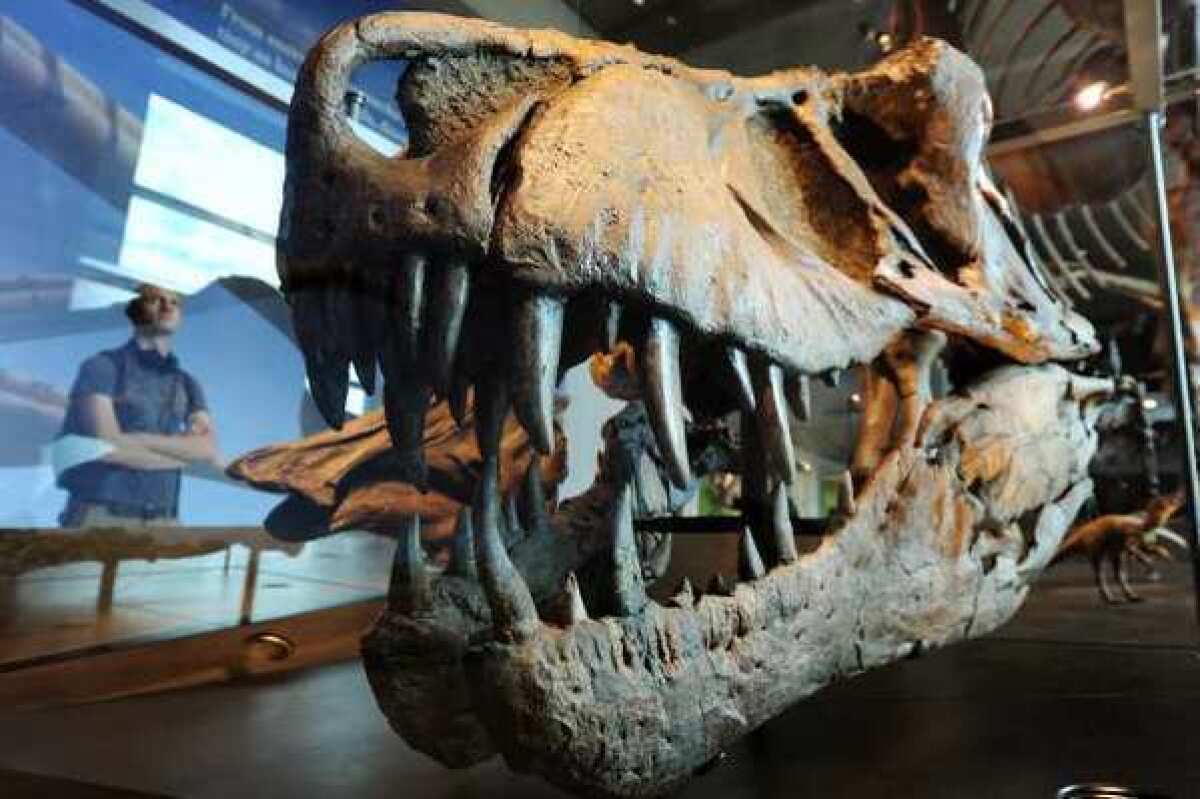Dinosaur coldblooded theory gets dash of cold water

- Share via
Dinosaurs: coldblooded or warmblooded? Inquiring paleontologists have long wanted to know, and a new study offers thoughts on the issue. Basically, it says that a central line of evidence for coldbloodedness is all wet.
For years, some dinosaur mavens have argued that the ancient beasts were coldblooded, based on the growth patterns seen in fossil bones. Examination revealed that -- like the rings of a tree -- bone material was laid down in layers. The argument went like this: The rings corresponded to periods of active growth followed by periods of slow growth, just what you might expect with a coldblooded animal, which can’t control its inner temperature very well.
The periods of active growth would correspond to warm seasons. The slowdowns would occur during winter, when the coldblooded critters would cool down and their metabolism get all sluggish.
Authors of a new paper in the journal Nature say there is one big problem with this theory: the assumption that warmblooded beasts don’t also have tree-ring-like patterns in their bones.
Nobody had really done a thorough, comprehensive look.
Meike Kohler of Spain’s Institut Catala de Paleontologia Miquel Crusafont and coworkers decided to do that. They studied leg bones of a wide array of ruminant animals, including reindeer, giraffes, red deer and a passel of others -- 100 in total, representing almost all branches of the ruminant family.
What did they find? Tree-ring-like patterns. In warmblooded beasts. This, they say, puts to rest the tree-ring-means-coldblooded argument.
They also did a variety of measurements on some of the animals and found that various growth- and metabolism-related hormones rise and fall with the seasons, as well as core temperature and resting metabolic rate. This might be just what you’d expect, they argue, since food is not plentiful all year round. When there’s lots of vegetation to eat, an animal can grow more vigorously. When there isn’t, it makes sense that it would have strategies to preserve its resources.
All in all, they say, their finding “debunks the key argument” that cites bone growth rings as evidence of coldbloodedness.
The coldblooded argument was already eroding, writes paleontologist Kevin Padian of UC Berkeley in an accompanying commentary. Scientists have noted that the bones of dinosaurs were far more densely packed with blood vessels than is the case for modern reptiles and amphibians. That implies a high metabolic rate and thus warmbloodedness.
Interestingly, this annual cycle of bone growth appears to be ingrained in the animal and not just passively occur in response to food shortages and other stresses, Padian writes. Scientists have done experiments in which they’ve kept animals away from natural light and altered the patterns of day length (longer in summer, shorter in winter, etc.) to create an artificial, 10-month year.
When that was done, the cycle of active and sluggish bone growth changed from a 12-month cycle to a 10-month one.



